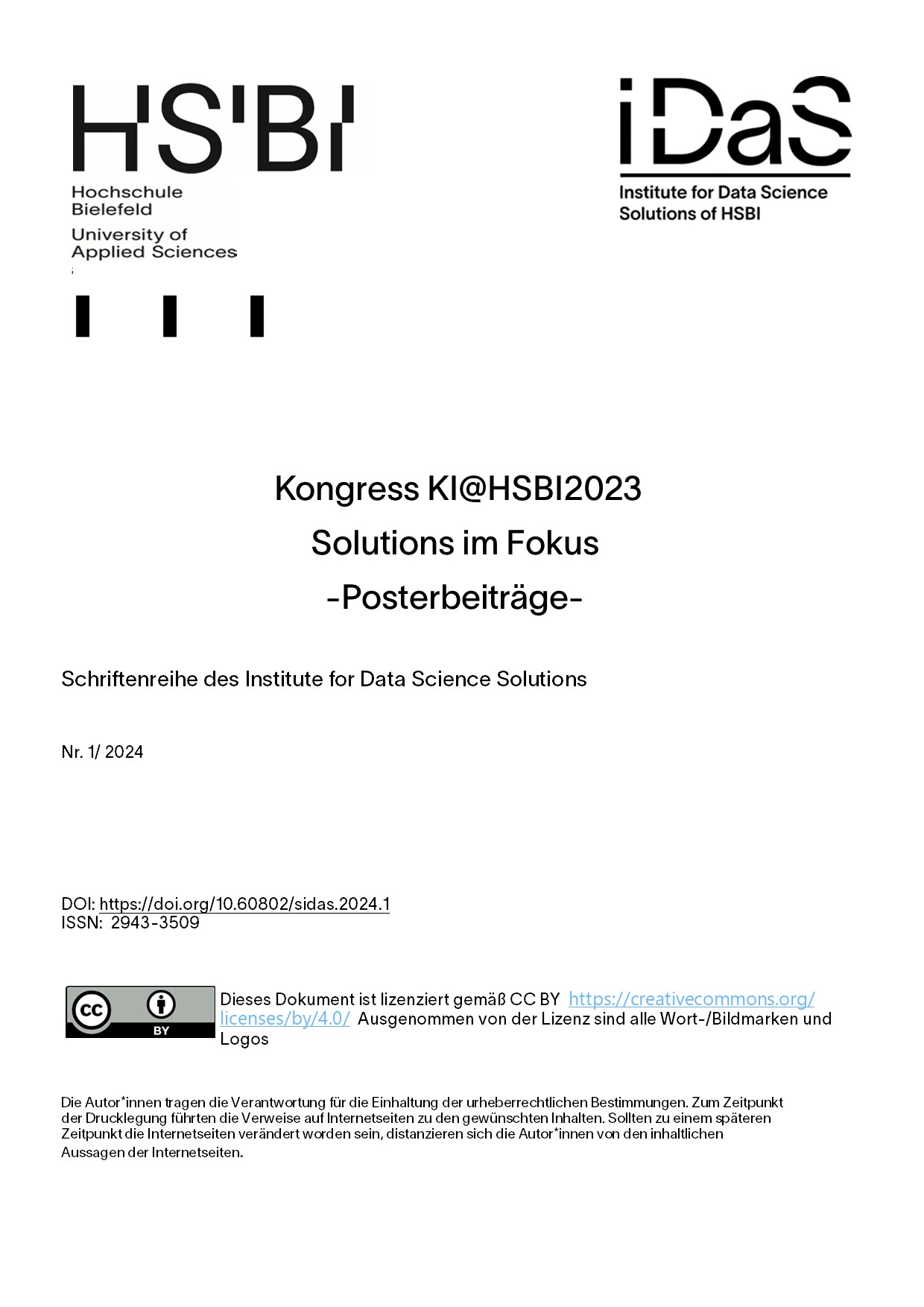Predicting the Extent of Co-Activation of One Muscle Head by sEMG-Measurements from the Other Muscle Head of the Biceps Brachii Using Linear Regression and Shallow Feedforward Neural Networks
Schlagworte:
sEMG, Muscle model, limb movement, prediction, virtual sensor, linear regression, regressionAbstract
Vision: An intuitive control of exoskeletal devices which requires lag-free responses of its actuated joints. Surface electromyography (sEMG) allows for intuitive and lag-free control. By using a Hill-type model of the main muscles (here biceps brachii and triceps brachii) of a biological joint the internal delays of the muscle can be exploited to predict a joint angle with no time delay to the real joint angle
This poster introduces a method to train a virtual sEMG-sensor as a replacement for the real sEMG signal of a muscle head. The virtual sensor is trained based on data from the sensor of the other muscle head. For validation of the virtual sensor, the sensor is used as a replacement input in a domain-knowledge based model (Grimmelsmann et al., 2023).
By comparision of the virtual sensor signal and the measured sensor signal a sEMG assessment can be done
This work is based on a published dataset (Mechtenberg et al., 2023). sEMG signals of both biceps brachii and the two triceps brachii heads were recorded. sEMG signals contain frequency components from about 10 Hz to 400 Hz (Merletti, Farina, and Holobar, 2018). The target angle of the elbow (dumbbell curls) is at about 0.5 Hz. Therefore, the sEMG was not directly used as the target value of the virtual sensor regression. It is further converted into the activation of the muscle.
In the domain model, the activation of the muscle is calculated by a nonlinear low-pass filter that represents the activation dynamics of the muscle head (Zajac, 1989). The resulting signal thus has lower frequency components than the sEMG.
The regression on individual experiment varies between the recorded subjects. Small Extension in the Architecture Makes Interpretation Possible. The Virtual Sensor is Viable for Using it in a Biomechanical Model for Movement Prediction and the Virtual Sensor compared to Measured Signal can serve as sEMG Assessment.
Veröffentlicht
Zitationsvorschlag
Ausgabe
Rubrik
Lizenz
Copyright (c) 2024 Nils Grimmelsmann, Malte Mechtenberg, Axel Schneider

Dieses Werk steht unter der Lizenz Creative Commons Namensnennung 4.0 International.


